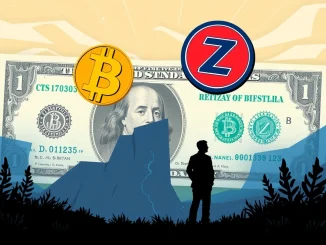
The landscape for financial products tied to digital assets in the United States remains dynamic, often marked by regulatory scrutiny. The latest development from the SEC highlights this ongoing process, impacting several prominent cryptocurrency projects seeking mainstream investment avenues. This recent action specifically touches upon multiple Crypto ETF filings, introducing further delays but also acknowledging a novel proposal.
What’s Happening with Key Crypto ETF Filings?
According to observations shared by Bloomberg ETF analyst James Seyffart, the U.S. Securities and Exchange Commission (SEC) has opted to postpone decisions on a series of applications for exchange-traded funds linked to cryptocurrencies. This isn’t an outright rejection, but rather a standard procedural step the regulator often takes when it requires more time for review.
- XRP ETFs: Filings from firms like Bitwise and CoinShares for ETFs based on XRP have seen their decision timelines extended. The path for an XRP ETF has unique complexities given the regulatory history surrounding XRP itself.
- Litecoin ETF: A proposed ETF centered on Litecoin (LTC) has also been subject to a delay.
- Fidelity’s Bitcoin ETF: Notably, even a filing from Fidelity related to a Bitcoin ETF, specifically one proposing ‘in-kind’ creations and redemptions (where physical BTC, rather than cash, is exchanged), has faced a delay. While spot Bitcoin ETFs were approved earlier this year, variations like the in-kind structure still undergo thorough review.
These delays underscore the SEC’s cautious approach as it navigates the intricacies of integrating digital assets into traditional financial structures. Each application presents unique considerations regarding market structure, investor protection, and potential manipulation concerns.
Is There Any Positive News Amidst the Delays? Acknowledging the Staked TRX ETF
While delays characterized many filings, the update wasn’t entirely without positive signals for the broader crypto market. The SEC did acknowledge a proposal from Canary Funds for a TRX ETF that incorporates a staking component. This acknowledgement is significant because it marks regulatory engagement with a product that goes beyond simple spot exposure to a cryptocurrency.
A staked TRX ETF would potentially allow investors to gain exposure not only to the price movements of Tron’s TRX token but also potentially benefit from staking rewards generated by participating in the network’s consensus mechanism. This introduces a new layer of complexity for regulators, who must consider how staking rewards are handled, potential risks associated with staking (like slashing), and the overall structure of such a product within existing securities law.
The acknowledgement of this filing doesn’t guarantee approval, but it indicates that the SEC is reviewing proposals for more complex crypto-linked financial products, potentially opening the door for staked asset ETFs in the future.
Why Do SEC Delays Happen?
SEC delays on ETF applications are common, not just for crypto products but across various asset classes. They typically occur for several reasons:
- Need for More Information: The SEC may require applicants to provide additional details regarding the proposed ETF’s structure, custody arrangements, market surveillance mechanisms, or other operational aspects.
- Complex Review: Especially with novel asset classes like cryptocurrencies, the review process is complex. The SEC must ensure the product meets regulatory standards designed to protect investors and maintain fair and orderly markets.
- Public Comment Period: Filings often involve public comment periods, and the SEC needs time to review and consider feedback received from the public and industry participants.
- Ongoing Market Evolution: The crypto market is constantly evolving. The SEC may take time to understand new market dynamics, technologies, or potential risks associated with the underlying assets.
For products like the XRP ETF or a staked TRX ETF, the specific characteristics of the asset and its ecosystem add further layers to this complex review process.
What Does This Mean for the Market and Investors?
These regulatory actions send mixed signals to the market:
- Continued Caution: The delays reinforce the view that the SEC is proceeding cautiously with crypto-related financial products beyond the recently approved spot Bitcoin ETFs. This can be frustrating for proponents hoping for rapid expansion of accessible crypto investment vehicles.
- Focus on Specifics: The differentiated treatment (delaying some, acknowledging a staked product) shows the SEC is evaluating each filing on its specific merits and structures, rather than issuing blanket decisions.
- Potential Future Avenues: The acknowledgement of the staked TRX ETF suggests that while the path is challenging, the SEC is at least engaging with proposals for products involving yield-bearing digital assets. This could pave the way for future staked Ethereum or other Proof-of-Stake asset ETFs down the line, assuming regulatory hurdles can be cleared.
For investors, this means patience remains key. The availability of products like an XRP ETF or a staked crypto ETF is subject to lengthy regulatory processes. Monitoring SEC announcements and understanding the specific details of each filing is crucial.
Conclusion: Navigating the Regulatory Currents
The latest actions from the SEC regarding various Crypto ETF filings paint a picture of ongoing regulatory navigation. Delays for proposals like the XRP ETF, Litecoin ETF, and Fidelity’s in-kind Bitcoin ETF highlight the regulator’s deliberate pace and the complexities involved in approving these products. However, the acknowledgement of a staked TRX ETF introduces an interesting dynamic, suggesting the SEC is beginning to engage with more innovative, yield-generating crypto structures.
While the road to broader crypto ETF approval in the U.S. has its share of hurdles, these steps, both the delays and the acknowledgements, are part of the necessary process for potentially bringing these products to a wider investor base under regulatory oversight. The market will be watching closely for the SEC’s final decisions as these timelines approach.



